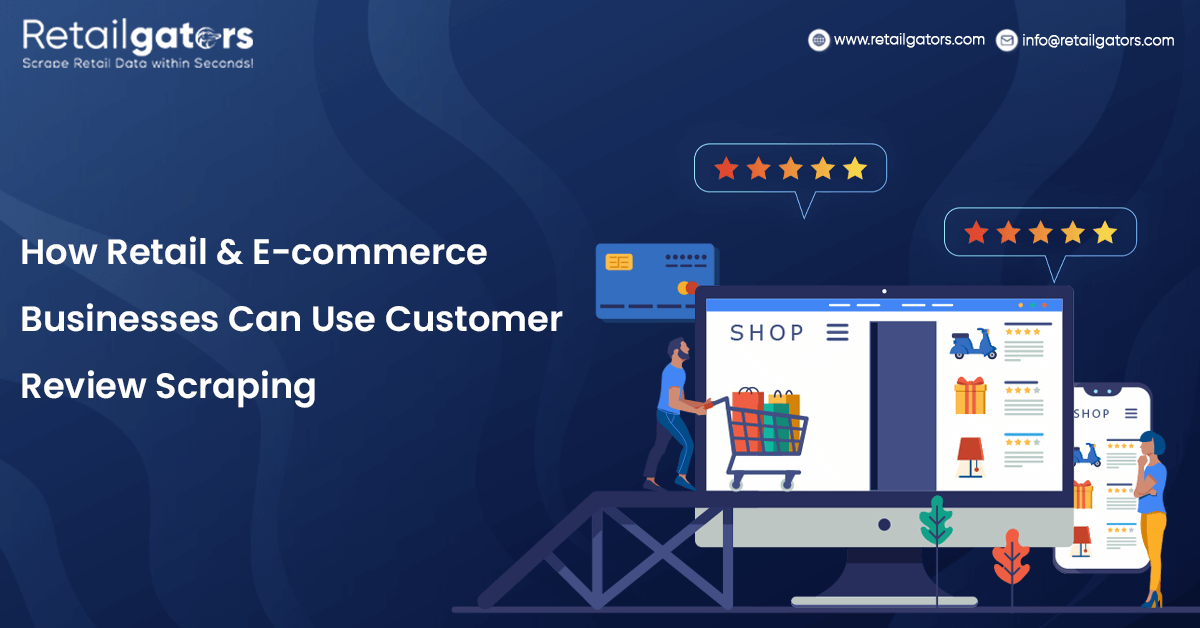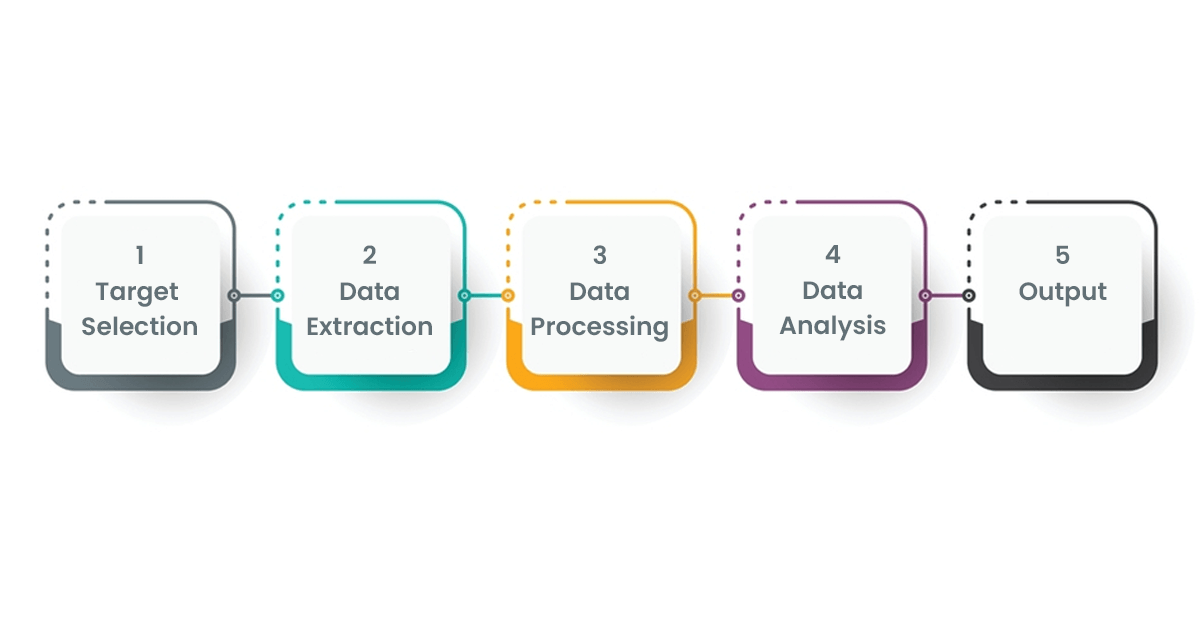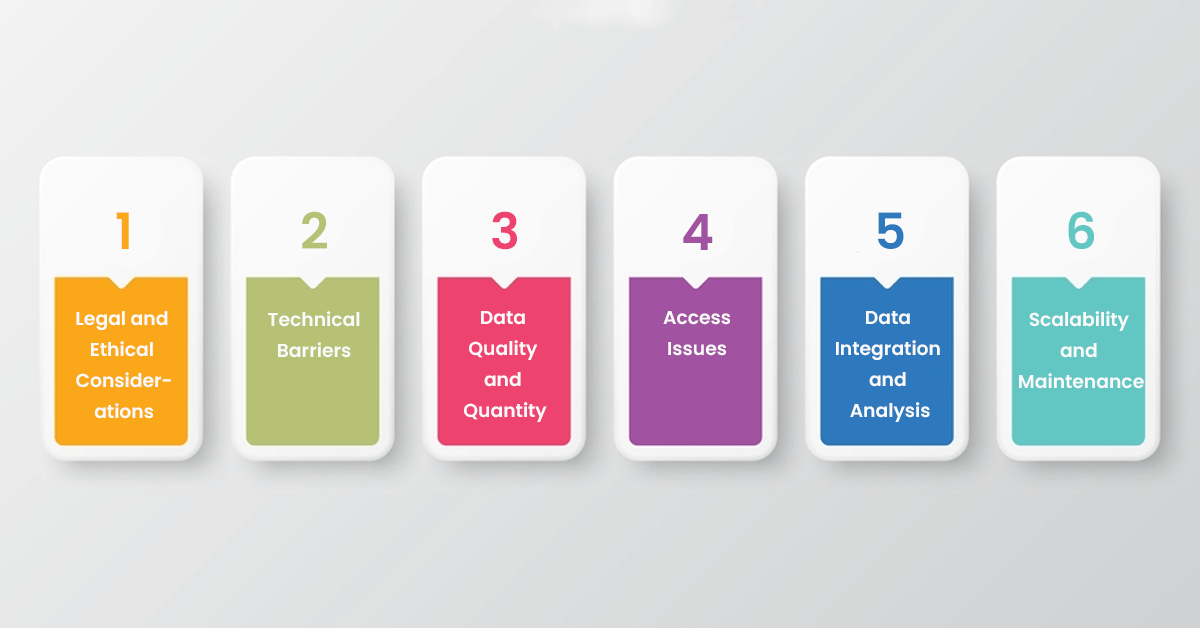
In the challenging retail and online shopping world, what customers say about your products can make or break your sales. That's where Customer Reviews Scraping comes in; it's an essential technique for businesses to understand what these reviews say. By looking closely at these reviews, businesses can do a better job with their offerings and make customers happier. This blog will discuss how using these reviews can help improve your business, such as creating tailor-made services, improving what you sell, and making your brand stand out. Let's see how we can use your customers' thoughts to guide you in making the best decisions for your business.
What is Customer Review Scraping?

Customer review scraping is an automated process of collecting and extracting customer feedback from online shopping sites, social media, and review sites. This feedback is then organized neatly into tables or databases so it's easier to understand and use for improving business strategies.
Here's a breakdown of how customer review scraping works:
Target Selection
First, you identify the websites or platforms from which you want to get reviews, like Amazon, Yelp, or Trustpilot. Some tools already know how to grab reviews from these big sites, but you might have to configure them manually.
- Scraping Tools : Specialized tools crawl websites and extract relevant information using HTML parsing techniques.
- APIs : Some platforms like Google Play Store or Yelp let you access their review data directly. But you need their permission, and you have to follow their rules.
- Manual extraction : This is just good old copy-pasting. It works, but it can take a lot of time if you have to do it for large volumes of reviews. This might be practical for smaller websites or special needs.
Data Processing
The information you collect might be unstructured and need tidying up. This can mean removing HTML Tags, making sure all the formats match (like how dates are shown), and removing any details that don't help you.
Data Analysis
Once structured, the data can be analyzed using various techniques
- Sentiment analysis : Understand the overall positive or negative sentiment of reviews.
- Topic modeling : Identify recurring themes and keywords.
- Comparative analysis : Compare your reviews to competitors.
Output
The processed data can be exported to various formats like spreadsheets, databases, or analytics platforms for further analysis and decision-making.
Why do Retail and E-commerce Businesses Scrape Customer Reviews?
Customer review scraping can help businesses in several ways:
Understand Customers Better
By analyzing reviews, you can understand what customers like and don't like about your products or services.
Improve Products
You can use the feedback to improve your products by addressing common complaints or requests.
Monitor Your Reputation
Keep an eye on what people say about your brand and react quickly if you need to fix a problem.
Compare with Competitors
You can see how your products perform against the market competitors. It helps understand their marketing and pricing strategies and product development.
Find Review Trends
Spotting trends in reviews can help you predict what customers want in the future.
Make Smart Decisions
Use all the feedback to make informed choices about product changes, pricing, and marketing strategies.
Customer Support
Identify customers' issues and help solve them more effectively.
Tailor Marketing
Create adverts and promotions that speak directly to what your customers care about based on their reviews.
Formats of Customer Reviews
Retail and e-commerce customer reviews can come in various formats, offering different insights and values. Here's a simple explanation of the most common formats:
Star Ratings
Customers give a product or service a rating usually ranging from one to five stars, with five stars being the best. This glance gives a general idea of customer satisfaction.
Written Reviews
These are more detailed descriptions where customers share their experiences and what they liked or disliked. They might also give suggestions or tips for future customers.
Photos and Videos
Some customers upload pictures or videos of their bought product. This helps others see the product beyond the promotional images and can highlight aspects like quality, size, and how it's used.
Yes/No Recommendations
In some formats, customers are asked if they would recommend the product or service to others, answering with a yes or no. It's a straightforward way to gauge overall satisfaction.
Pros and Cons Lists
Customers list out what they consider the positive aspects (pros) and negative aspects (cons) of the product or service. This format is beneficial for potential customers to weigh their decision.
Ratings on Specific Attributes
For some products or services, customers can rate specific attributes like durability, value for money, or customer service, usually on a scale (like 1 to 5). This is useful for getting feedback on particular areas of interest or concern.
Q&A Sections
Not exactly a review, but related, where potential customers can ask questions about the product, and either the seller or previous customers can answer them. It offers insights based on direct user experience, which can influence purchasing decisions.
Each of these formats serves a different purpose, and when combined, they provide a comprehensive picture of the customer's experience and satisfaction with a product or service.
Challenges While Scraping E-commerce and Retail Customer Reviews

Scraping customer reviews from retail and e-commerce websites can provide invaluable data, but it comes with its own set of unique challenges
Legal and Ethical Considerations
- Website Policies : Many websites include clauses in their service terms that prohibit scraping. Ignoring these can lead to legal repercussions.
- Privacy Concerns : People who write reviews sometimes share private details by accident. If you're collecting these reviews, you must be careful about keeping that private information safe. Plus, there are strict laws you need to follow, like Europe's GDPR or California's CCPA, that tell you how to handle people's details.
Technical Barriers
- Anti-Scraping Technologies : Websites may employ technologies like CAPTCHA, JavaScript challenges, or IP bans to detect and block scraping bots.
- Dynamic Content : Reviews on many e-commerce sites are loaded dynamically using JavaScript, which can be difficult for simple scraping tools to access.
- Website Structure Changes : Websites often change their layout or how data is accessed, breaking scrapers and requiring constant maintenance of the scraping scripts.
Data Quality and Quantity
- Volume : High volumes of reviews can be challenging to manage efficiently, requiring significant storage and processing capacity.
- Variability and Inaccuracy : Not all reviews are helpful or genuine. Some might be spam, made-up comments, or biased opinions. These messages can throw you off track if you're trying to determine what most people think based on reviews.
- Language and Sentiment Nuances : Understanding what someone means in their review can be challenging, especially using sarcastic jokes or local slang words.
Access Issues
- Rate Limiting : Many websites limit the number of requests from a single IP address to prevent overloading their servers, which can hinder large-scale scraping.
- Geographical Restrictions : Some reviews or websites might be accessible only from certain locations, requiring proxies or VPNs to access.
Data Integration and Analysis
- Unstructured Data : Reviews are typically unstructured text that can be difficult to analyze without sophisticated NLP (Natural Language Processing) tools.
- Integration with Existing Databases : Integrating scraped reviews with existing data warehouses or databases can require significant data transformation efforts.
Scalability and Maintenance
- Scaling Infrastructure : As your scraping operation grows, so does the need for more sophisticated infrastructure and distributed systems to manage the load.
- Ongoing Maintenance : Scraper scripts need constant updates to cope with changes in website layout or anti-scraping measures, requiring ongoing development resources.
Conclusion
Scraping customer reviews in retail and e-commerce is no small task, but the rewards of understanding your customers and enhancing your product offerings are immense. It can sometimes get complex with legal, technical, and operational issues, but this is where Retailgators comes in. As a professional web scraping service provider, Retailgators utilizes the most advanced scraping tools to fetch customer reviews. These reviews offer rich insights that can push your retail or e-commerce business off the charts. So, why ponder? Leverage the power of customer feedback with Retailgators and watch your business thrive in an otherwise competitive e-commerce universe.








Leave a Reply
Your email address will not be published. Required fields are marked